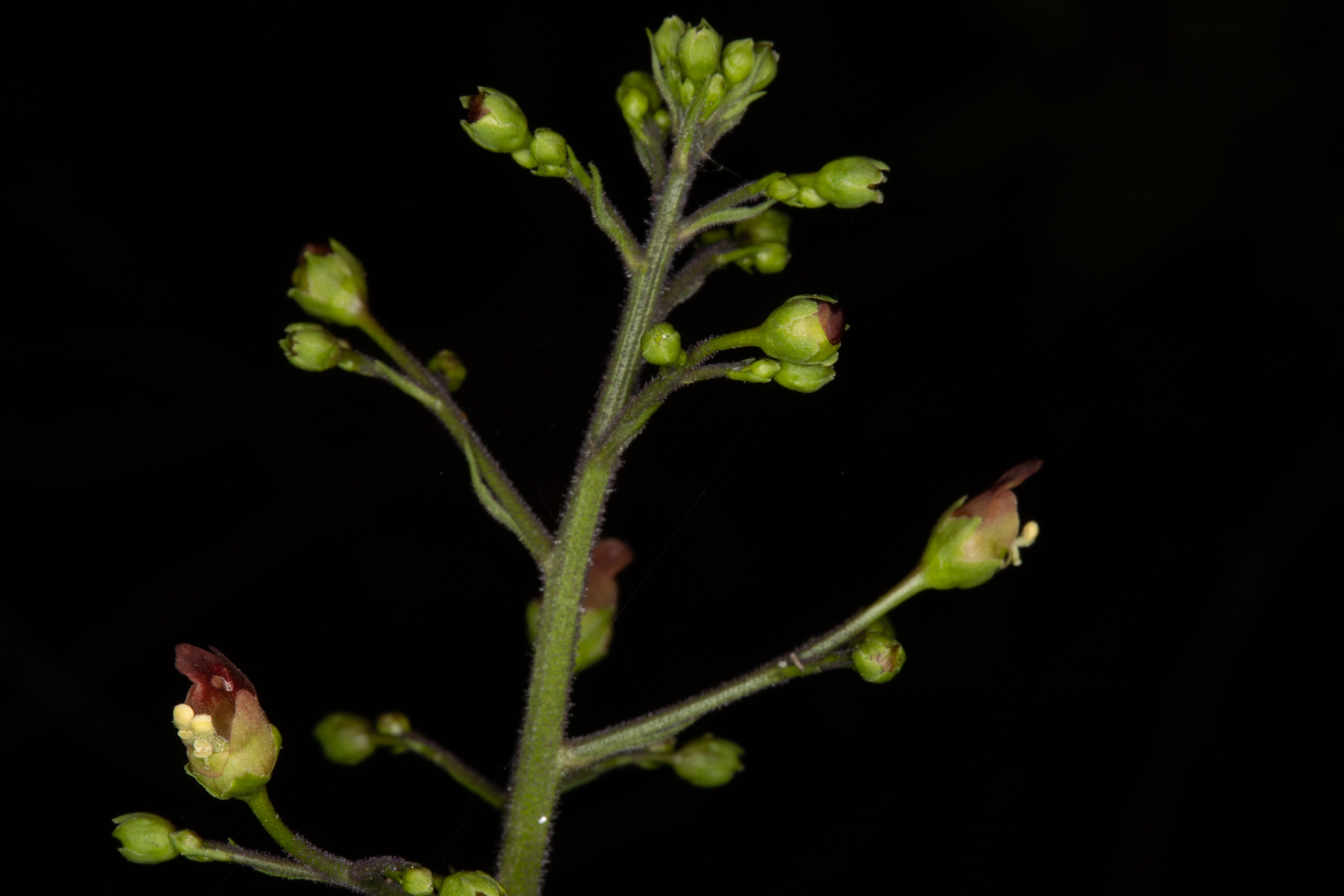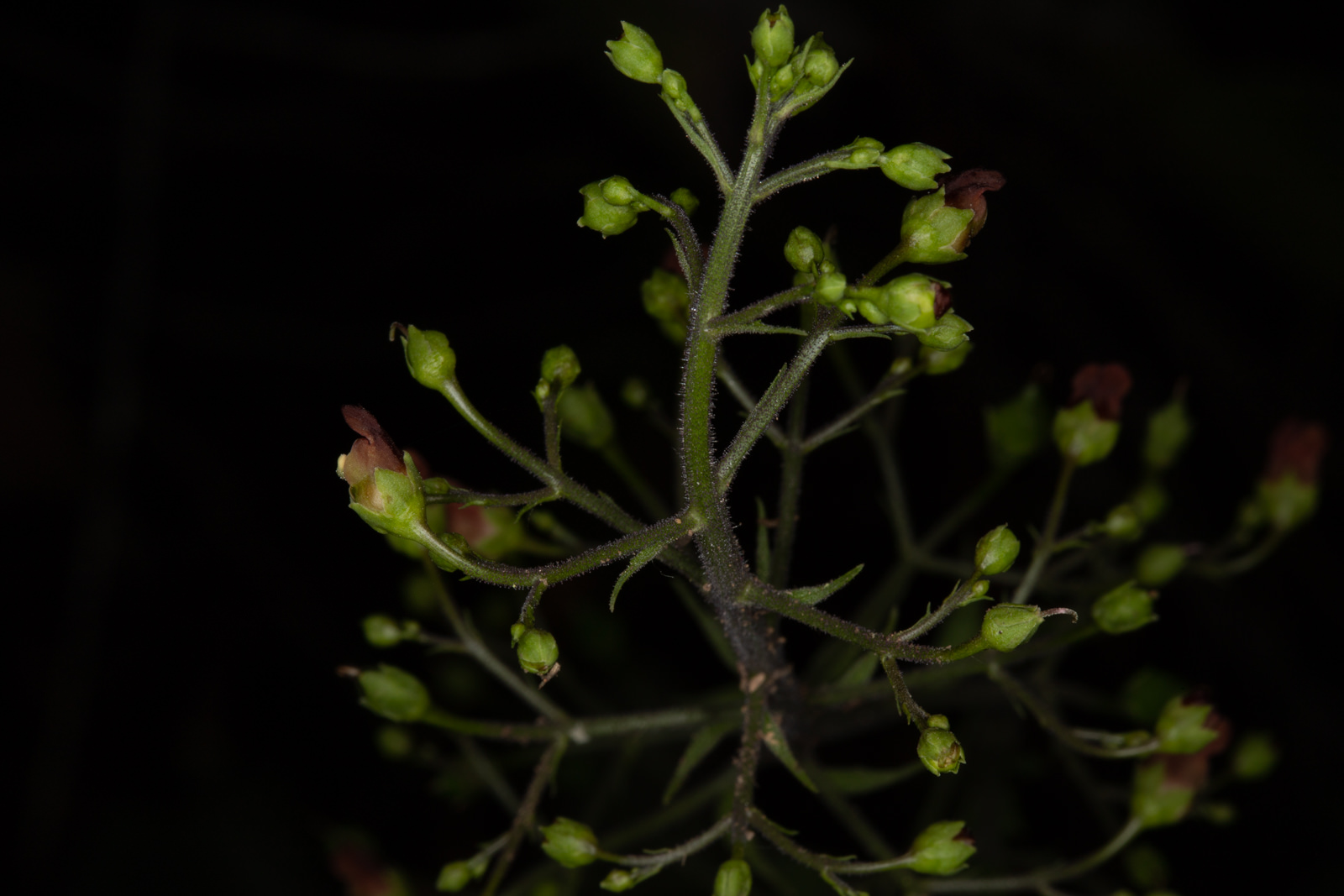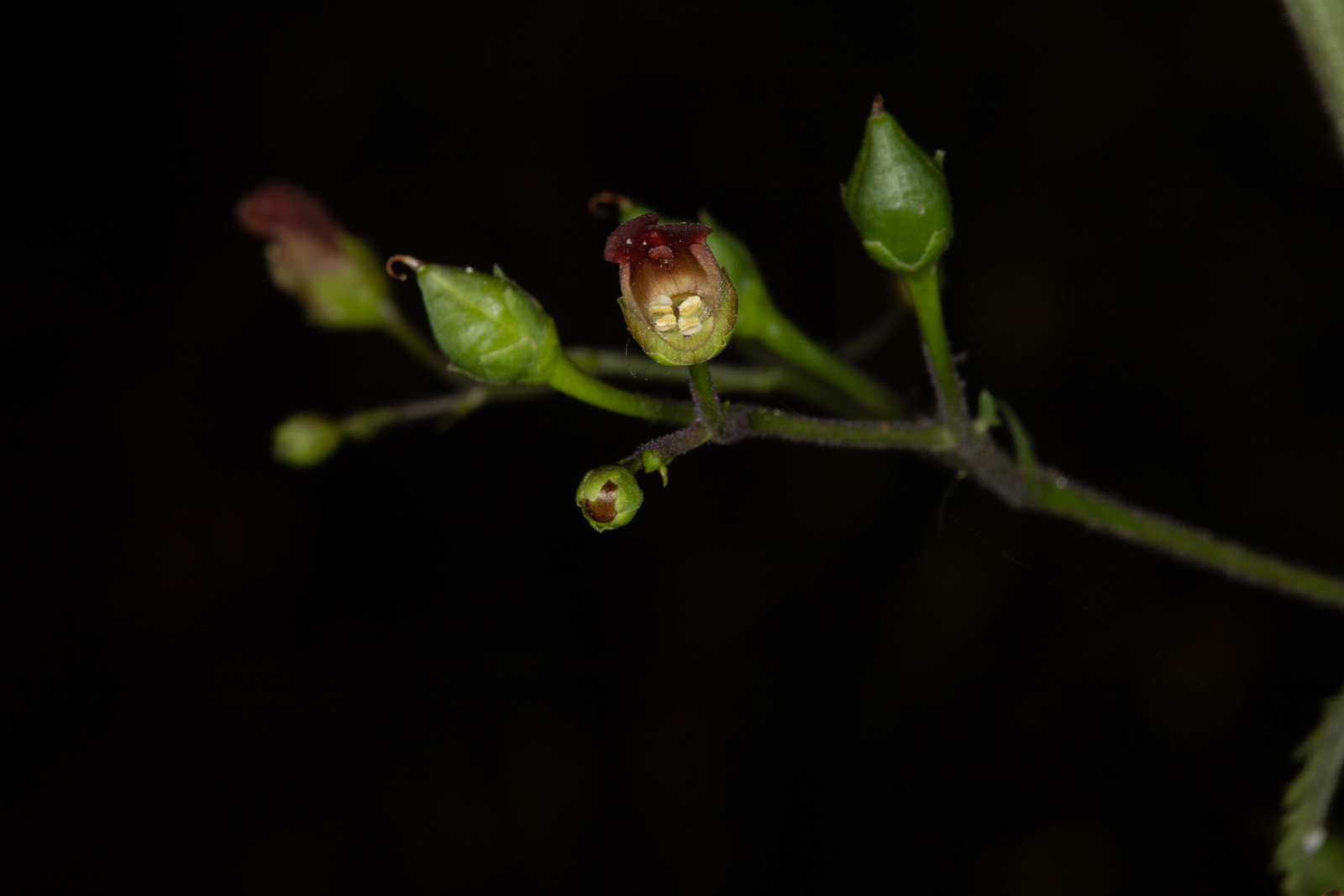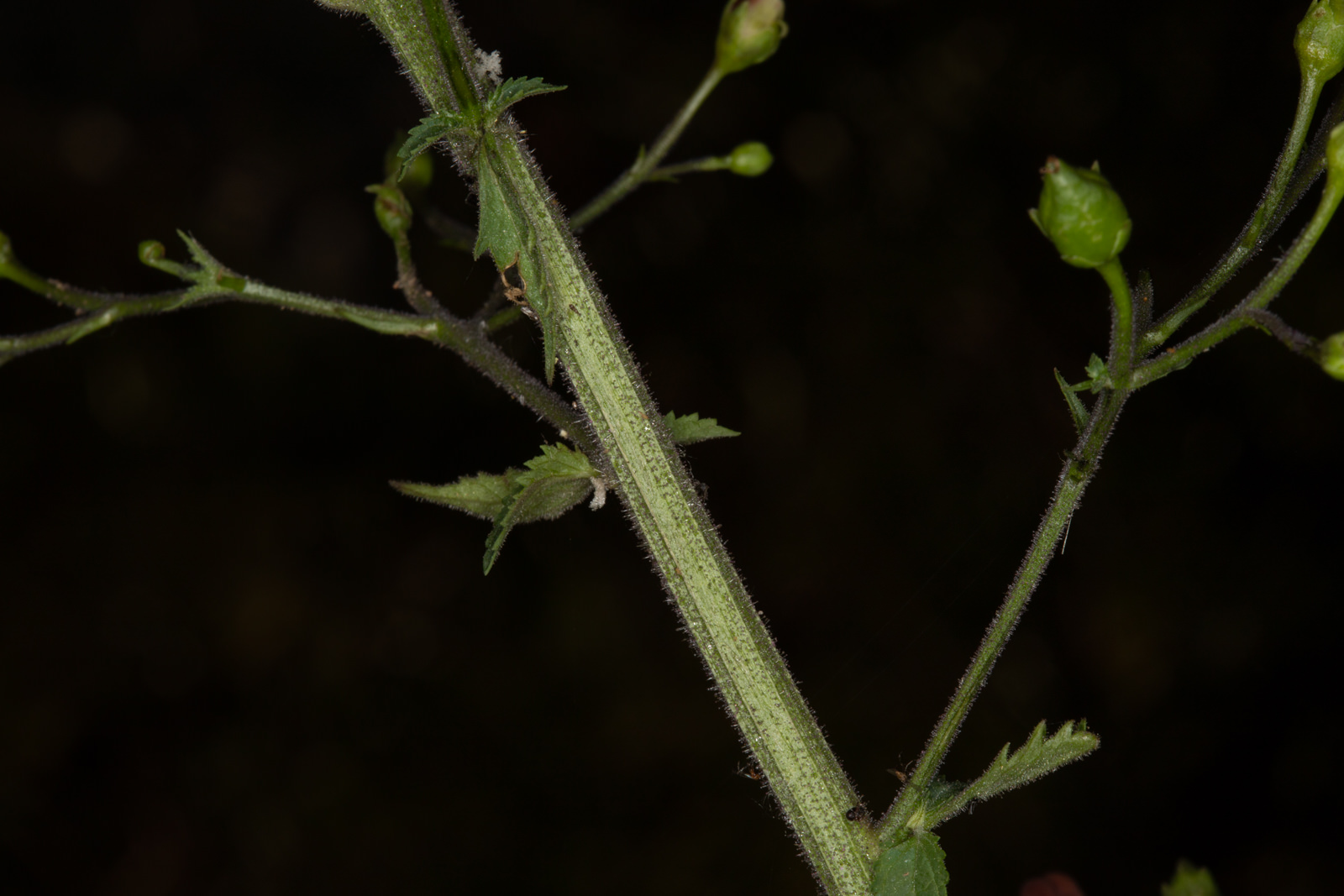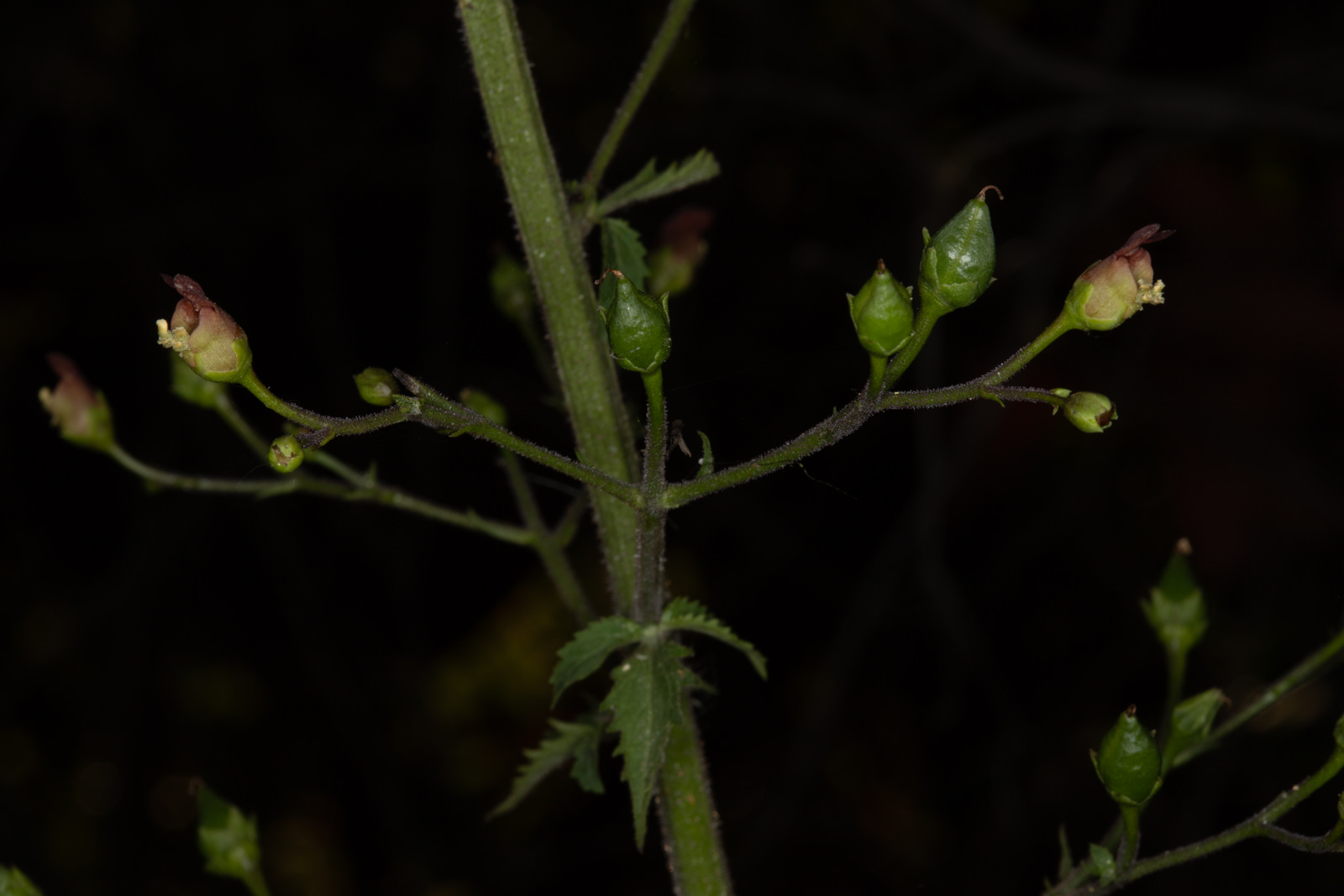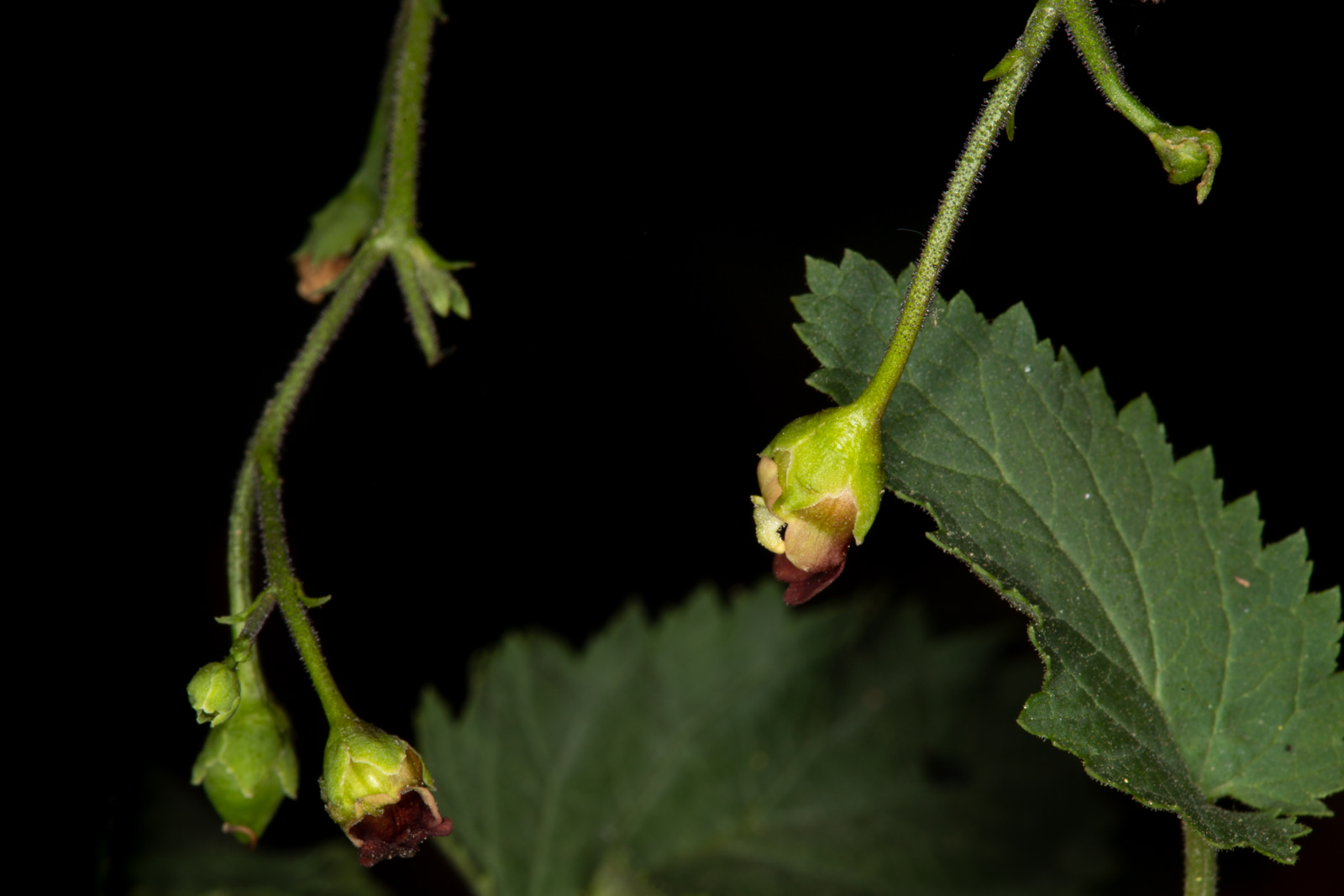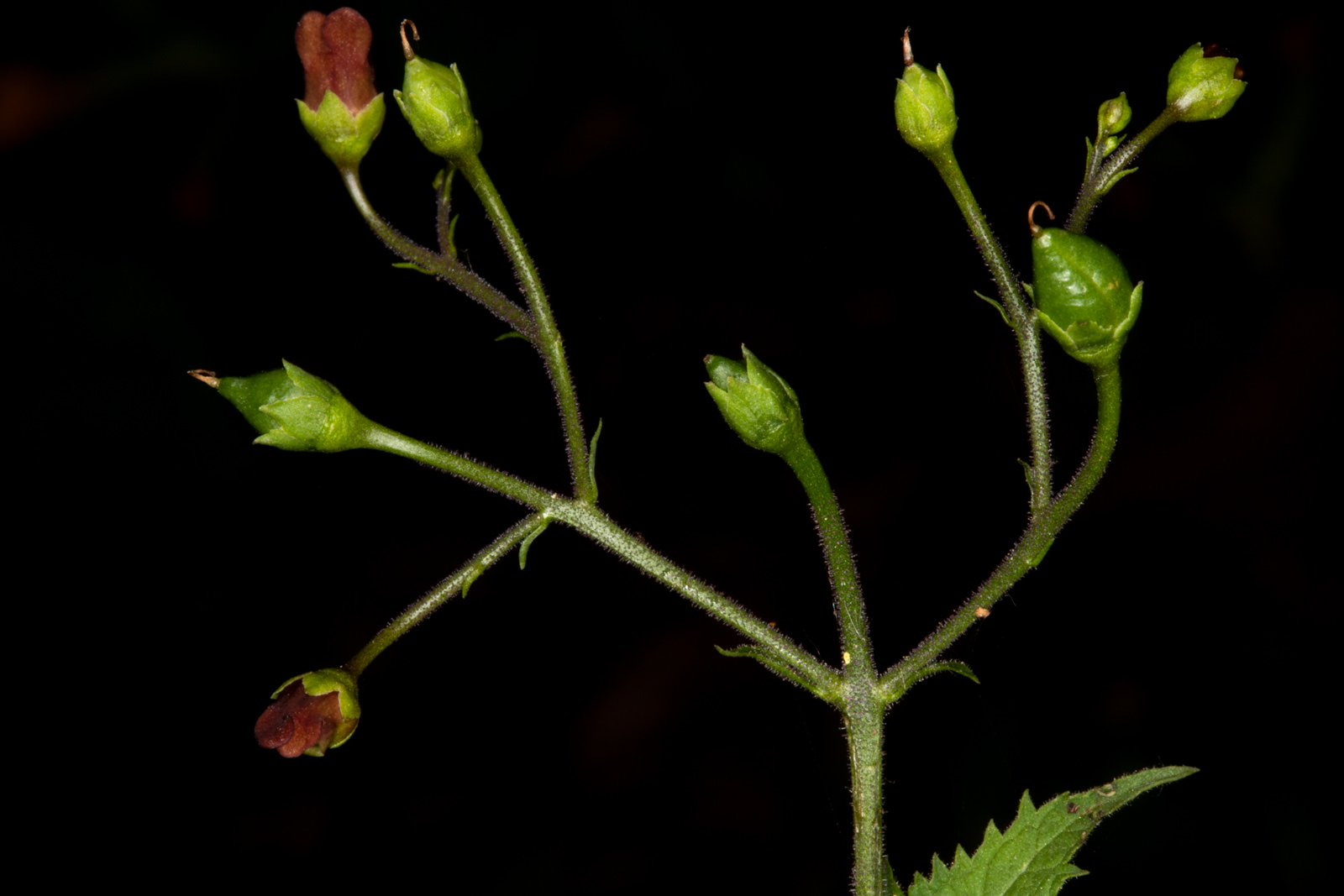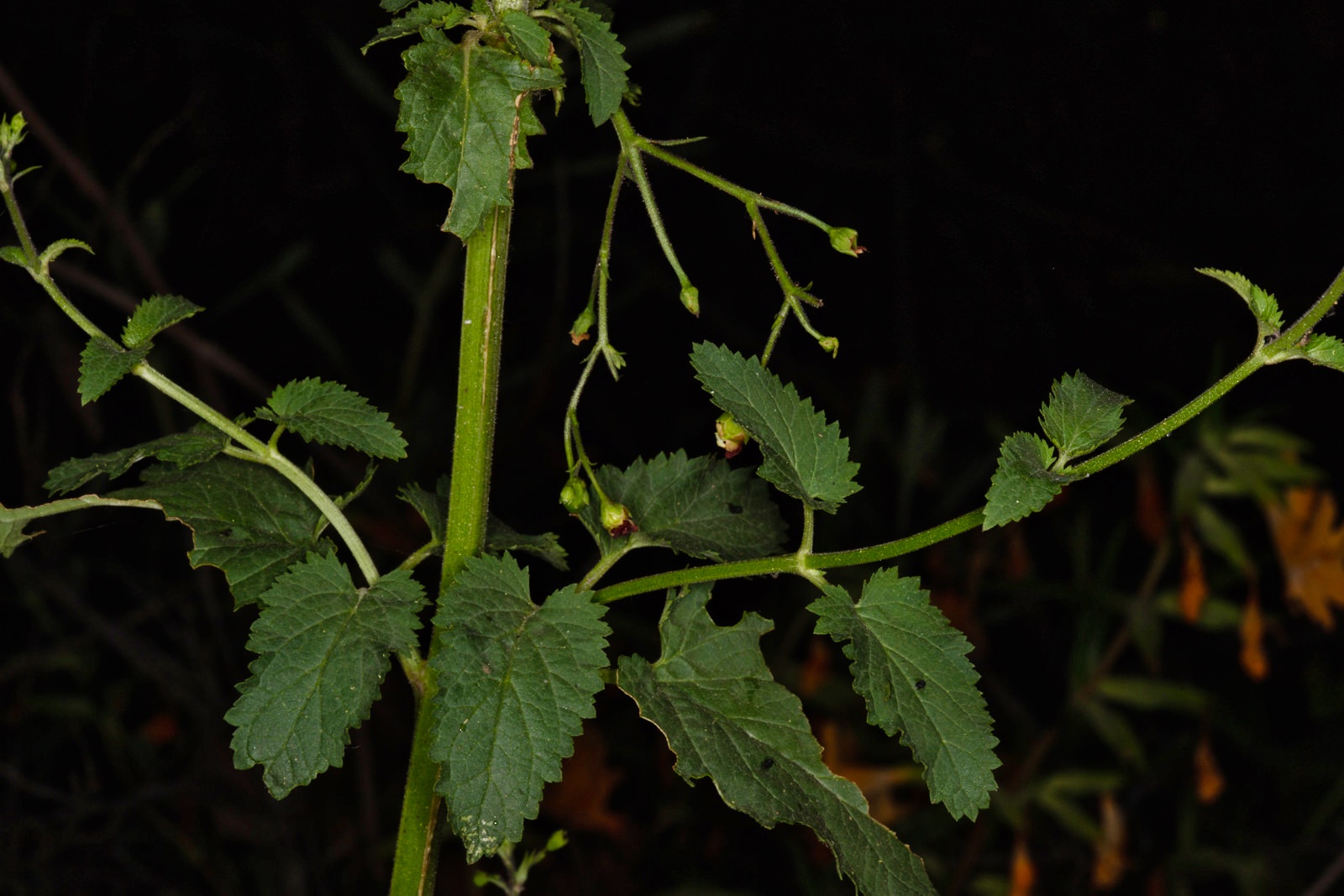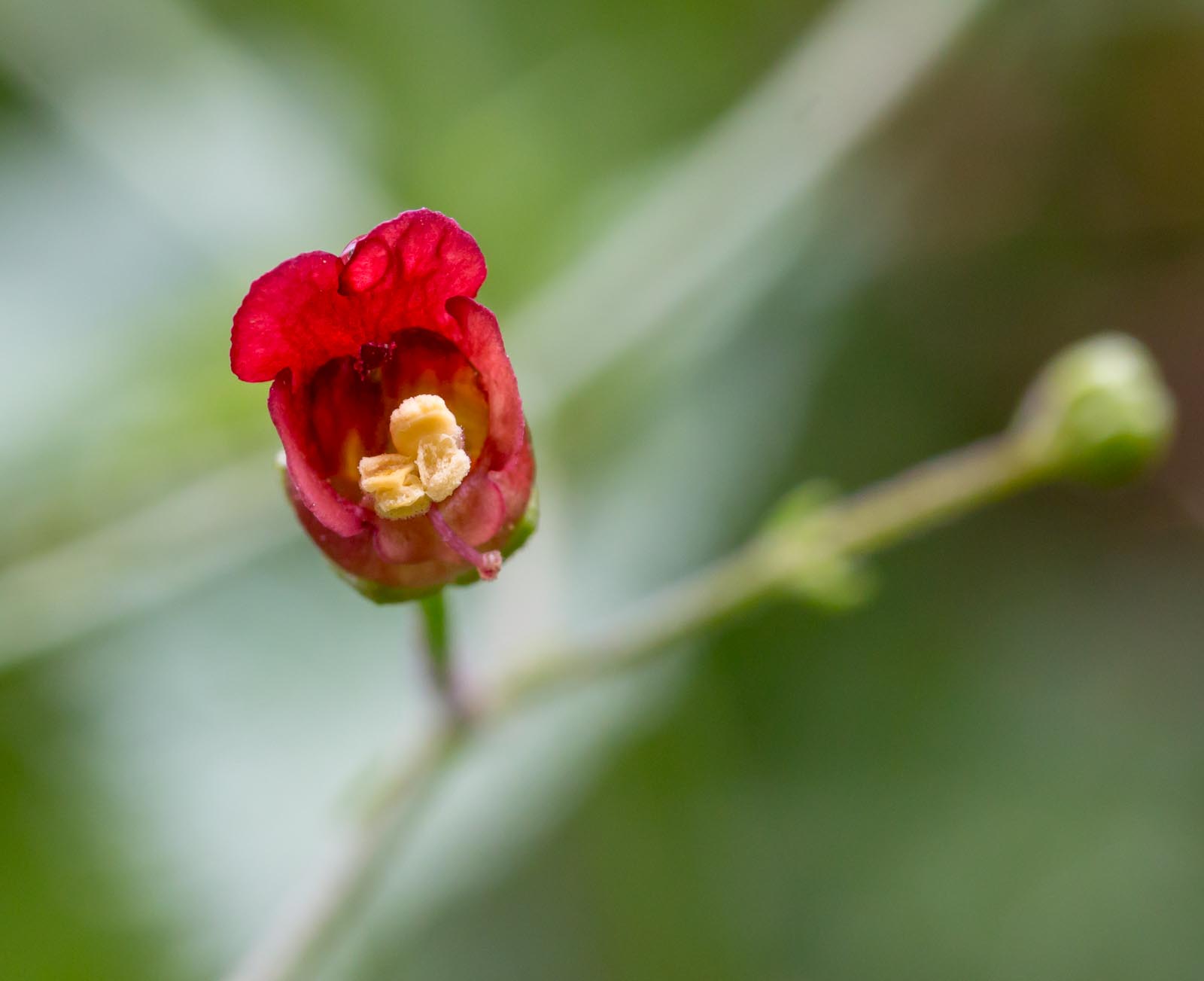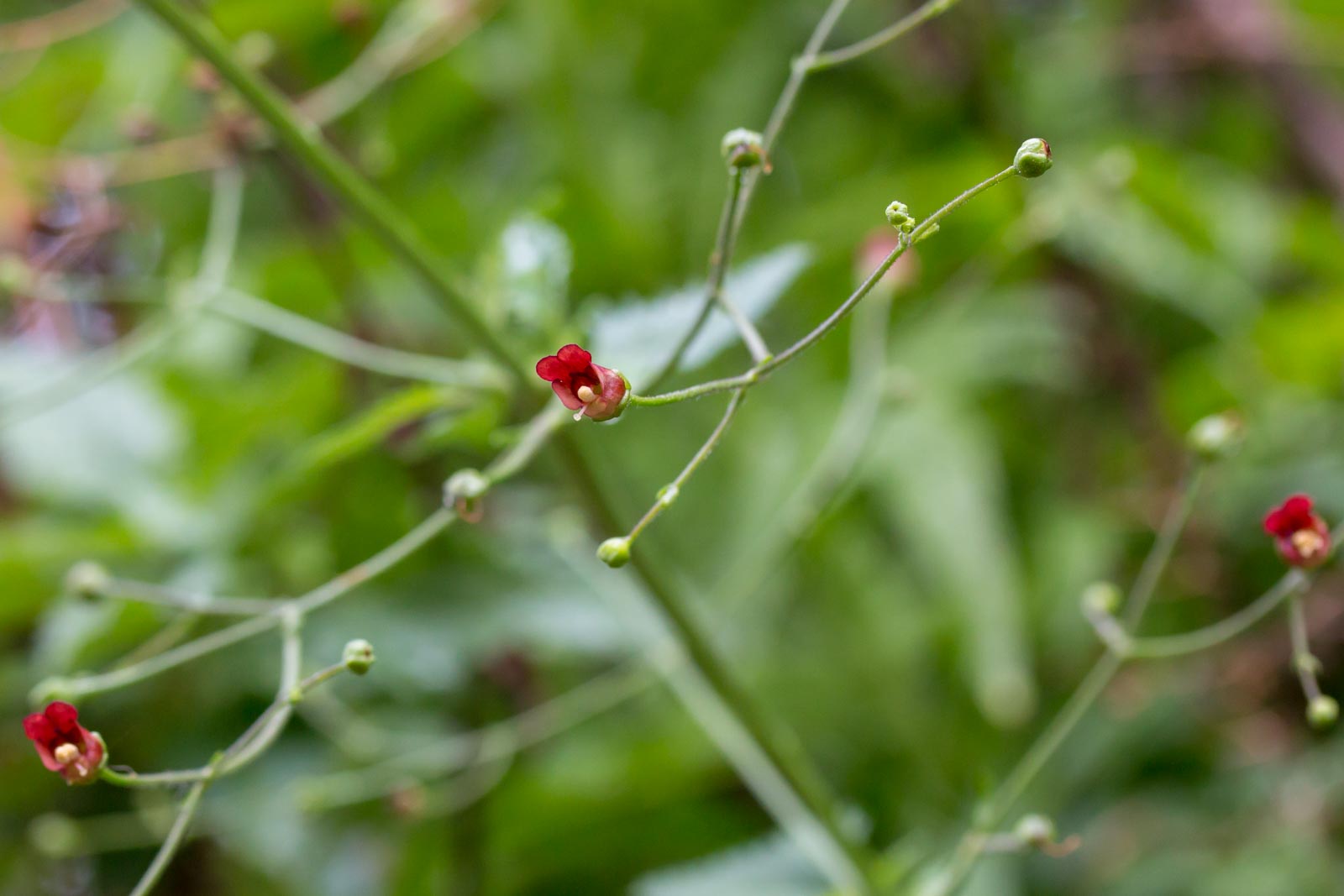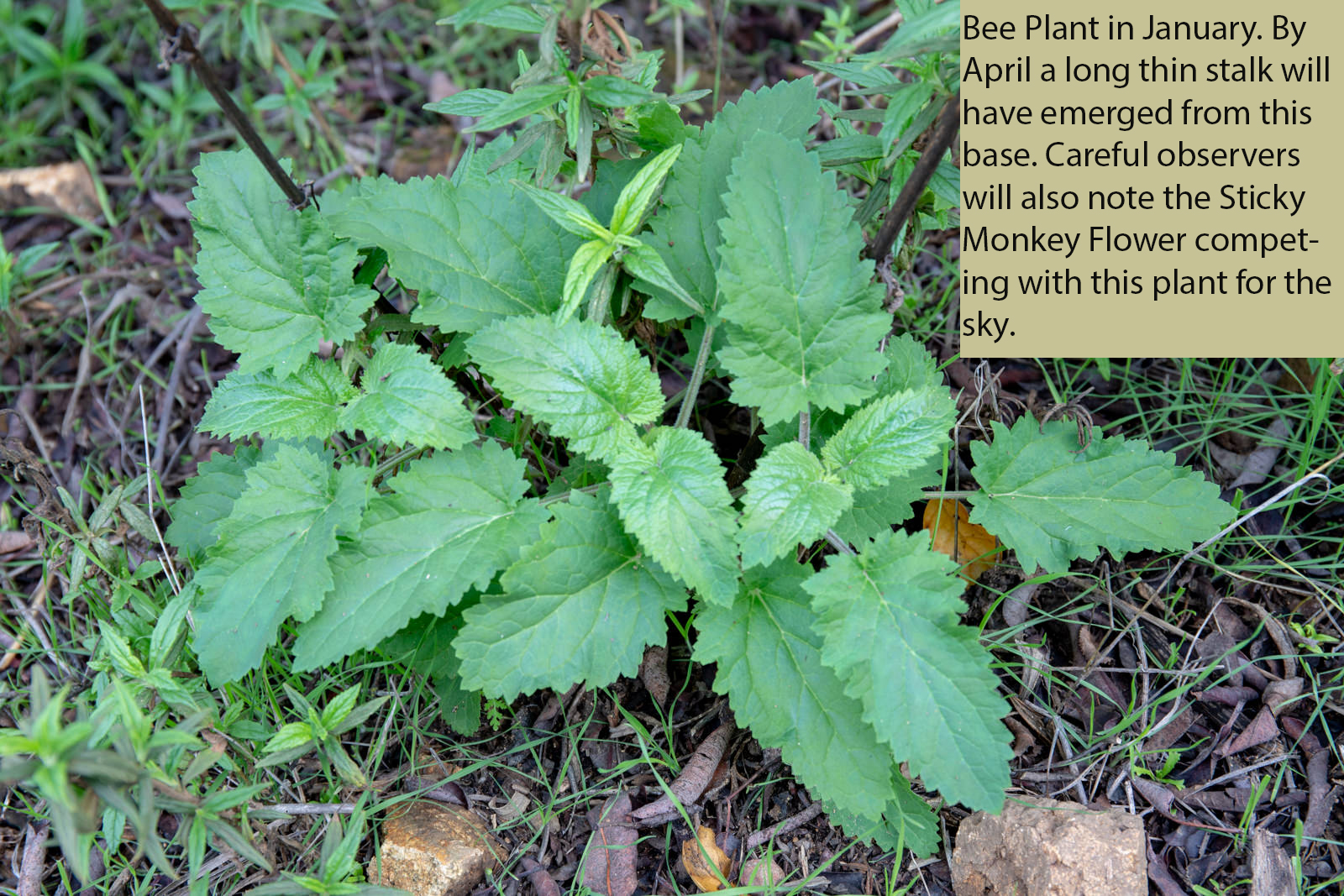Bee Plant
- Scrophularia californica
| Common Name(s): | Bee Plant |
| Scientific Name: | Scrophularia californica |
| Family: | Scrophulariaceae (Figwort) |
| Plant Type: | Perennial |
| Size: | up to six feet |
| Habitat: | sage, chaparral |
| Blooms: | April to July |
| Fire Response: | Stump Sprout or Seed |
Bee Plant or Scrophularia californica is a California native perennial that is found along the coast from British Columbia to Baja California. Many plants have beautiful flowers, this plant has flowers that could be considered ‘whimsical’. Numerous tiny red flowers grow from a nearly six foot stalk. The flowers are quite inconspicuous - it’s leaves are far more noticeable. My first encounter with Scrophularia californica was along the Backbone Trail near Latigo. Hidden in the shade of an Elderberry shrub, growing in a heavy clay soil was this ‘weedy’ looking plant with lots of the tiniest red flowers you could imagine - the size was out of proportion to the rest of the plant.
Characteristics of the plant: square stems, bright green opposite leaves - somewhat oval to triangular in shape and up to 7-1/2 inches (19 cm) long; heart-shaped with coarse irregular teeth. The leaf petioles (stem) are 3-1/2 inches (7 cm) or less and often fused at the base with the petiole of the opposite leaf. See image number 8 for a visual. Under ideal conditions, this herbaceous perennial spreads by underground stems (rhizomes) and can colonize an area. Seeds that ripen in the hard capsules are eaten by birds.
Bee Plant is classified as a Scrophulariaceae based up on the flowers traits: the ovary has two carpels (chambers) 4 or 5 of the following: stamens, petals and sepals. Additionally the red-brown to maroon flowers are considered irregular: 1/8 in. corolla is 2-lipped, with the 2-lobed upper lip protruding, the 3-lobed lower lip with the middle lobe bending backwards.
Pollinated by bees and small wasps. The Chalcedon Checkerspot Butterfly uses this plant as a host plant for its larvae. Caterpillars that consume leaves and stalks from this plant are able to utilize a chemical in the sap (Iridoid glycosides), making the larva poisonous and adults unpalatable. There are several studies that have verified this Read More This is similar to the Monarch Butterfly and Milkweed relationship.
Native Americans in northern Baja California (La Huerta Diegueno, or Tipai) made a tea from the root of California bee plant; this was taken to relieve a fever. The Pomo of northwestern California and the Ohlone of north and central coastal California used it as a poultice or wash for infections and boils. source of info: San Elijo Lagoon CONSERVANCY website - A great place to visit and a wonderful source of information!
Link to Calflora.net - the best source of this fascinating information.
Name Origin:
Scrophularia: named in 1474 by an Italian physician who noticed the resemblance between the rhizomal knobs of some species and the tubercular condition of human lymph nodes called scrophula. The genus Scrophularia was published by Carl Linnaeus in 1753. (ref. genus Scrophularia)
Contributed by George Sherman
Last modified: August 21 2024 15:18:47.
Number of Images: 12
Image Size Total: 4,278,111
References:
Wildflowers of the Santa Monica Mountains, by Milt McAuleyFlowering Plants: The Santa Monica Mountains, Coastal and Chaparral Regions of Southern California, by Nancy Dale
Chumash Ethnobotany: Plant Knowledge Among the Chumash People, by Jan Timbrook
Leaf Shapes Primer - Botanical Terms for Leaves: - Link

